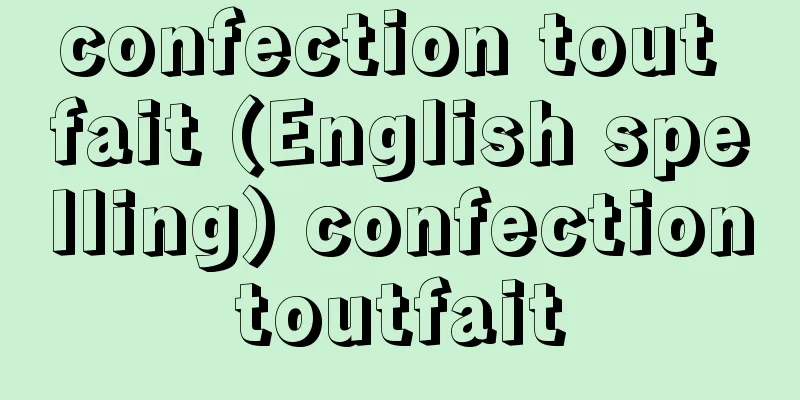Monkey raincoat - Sarumino

|
A collection of haiku poems from the early Edo period. Co-edited by Kyorai and Boncho. Kikaku has a preface, and Joso has a postscript. Completed in May 1691 (Genroku 4), it was published on July 3 of the same year by Izutsuya Shobei of Kyoto. There are two volumes, Ken and Kon. Ken contains volumes 1 to 4, and Kon contains volumes 5 and 6. Volume 1 introduces a new editorial approach, with a preface by Kikaku followed by winter hokku including "Shigure," volume 2 summer hokku, volume 3 autumn hokku, and volume 4 spring hokku. Volume 5 contains four volumes of Basho's troupe's immortal poems, and volume 6 contains Basho's haiku "Genjuan no Ki" and the afterword to Shinken, as well as "Kiyu Nikki" and a postscript to Jousou. The name of the collection comes from Basho's opening haiku, "Even the monkeys long for a small raincoat in the first rain." This is the fifth collection of the so-called "Basho Seven Collections," and is particularly highly regarded among Basho-style haiku books, with comments such as "It is the Kokinshu of haiku" (Kyoriku's "Uda no Houshi") and "By the time we reach the Saruminoshu, it is completely filled with flowers and fruit. This should also be called the Kokinshu of haiku" (Shiko's "Hotsuganbun"). Certainly, during this period, the wild spirit of the early Sho-style Chinese poetry and prose, with its large gestures, faded away, and instead, a world of refined serenity unique to Sho-style haiku, such as "sabi, shiori, and nasty," was created, and this book bears fruit, so this evaluation is only natural. It was also during this period that the "niohiduki" technique in renga was perfected. A total of 118 authors were included in the collection, with 108 in the hokku section. Notable authors include Boncho with 41 verses, Basho with 40, Kyorai and Kikaku with 25 each, Shohaku with 14, Fumikuni with 13, and Jousou, Sora, and Ube with 12 each. Many of the struggles faced in compiling the book are recorded in Kyorai Sho. [Nobuo Hori] "Basho's Seven Works, edited by Nakamura Shunsada (Iwanami Bunko)" ▽ "Sarumo Haiku Research, by Ogino Kiyoshi (1970, Akao Shobundo)" Source: Shogakukan Encyclopedia Nipponica About Encyclopedia Nipponica Information | Legend |
|
江戸前期の俳諧撰集(はいかいせんしゅう)。去来(きょらい)、凡兆(ぼんちょう)共編。其角(きかく)序、丈草(じょうそう)跋(ばつ)。1691年(元禄4)5月成り、同年7月3日、京の井筒屋庄兵衛(しょうべえ)の手により刊行。乾(けん)、坤(こん)2冊。乾には巻1から巻4までを配し、坤には巻5、巻6を配する。巻1は其角の序に続いて「時雨(しぐれ)」以下冬の発句、巻2は夏の発句、巻3は秋の発句、巻4は春の発句というように編集上の新機軸を打ち出している。さらに巻5は芭蕉(ばしょう)一座の歌仙4巻、巻6は芭蕉の俳文「幻住庵記(げんじゅうあんのき)」と震軒の後文、それに「几右(きゆう)日記」と丈草の跋文を収める。集の名は、巻頭の芭蕉の発句「初しぐれ猿も小蓑をほしげ也(なり)」にちなんでいる。いわゆる「芭蕉七部集」の5番目の撰集であるが、「俳諧の古今集也」(許六(きょりく)『宇陀法師(うだのほうし)』)、「猿蓑集に至りて全く花実を備ふ。是(これ)を俳諧の古今集ともいふべし」(支考(しこう)『発願文(ほつがんぶん)』)など、蕉風俳書のなかでもとくに高い評価を受けている。確かに、この時期は初期蕉風の漢詩文調による大きな身ぶりの風狂精神が影をひそめ、かわりに「さび・しをり・細み」など蕉風俳諧固有の清雅幽寂の世界が創出され、それが本書に結実しているので、この評価も当然といえる。連句における「にほひ付」が完成したのもこの時期である。入集の作者は総計118名、発句の部が108名。目だった作者としては凡兆の41句以下、芭蕉40、去来・其角各25、尚白14、史邦(ふみくに)13、丈草・曽良(そら)・羽紅各12などの名があげられる。編集に際しての苦心談は『去来抄』に多く記し留められている。 [堀 信夫] 『中村俊定校注『芭蕉七部集』(岩波文庫)』▽『荻野清著『猿蓑俳句研究』(1970・赤尾照文堂)』 出典 小学館 日本大百科全書(ニッポニカ)日本大百科全書(ニッポニカ)について 情報 | 凡例 |
Recommend
Holaspis
…However, a few species exceed 50cm in length, an...
Echininus cumingii spinulosus
...On the Pacific coast of Honshu (Kii Peninsula,...
Ara (Kue) - Ara
…A marine fish of the family Grouper in the order...
Kaminarimon - Kaminarimon
Asakusa is a district in the eastern part of Taito...
Harapaladeva
...In 1307, Malik Kafur again invaded the country...
price imitation policy
...(2) includes (a) prestige pricing, which takes...
Jet coaster - Jet coaster (English spelling)
An amusement park where small open passenger cars...
Latrobe, Benjamin Henry
Born: 1 May 1764, Fulneck, near Leeds [Died] Septe...
Acana - Akana
…It is often called Itoyori. It is also called It...
Trematode - Trematode
...About 17,000 species are known, including the ...
rubakhâ (English spelling) rubakha
…In Japan, it is also commonly called rubashka. O...
Doctor Zhivago
A full-length novel by Soviet poet Pasternak. Comp...
Jirisan - Chiisan
A 1,915m-high mountain located in South Korea, bo...
Cytology - Cytology
This method involves exfoliating cells from the s...
El Tránsito - El Tránsito
…The entire building is made of brick, except for...









